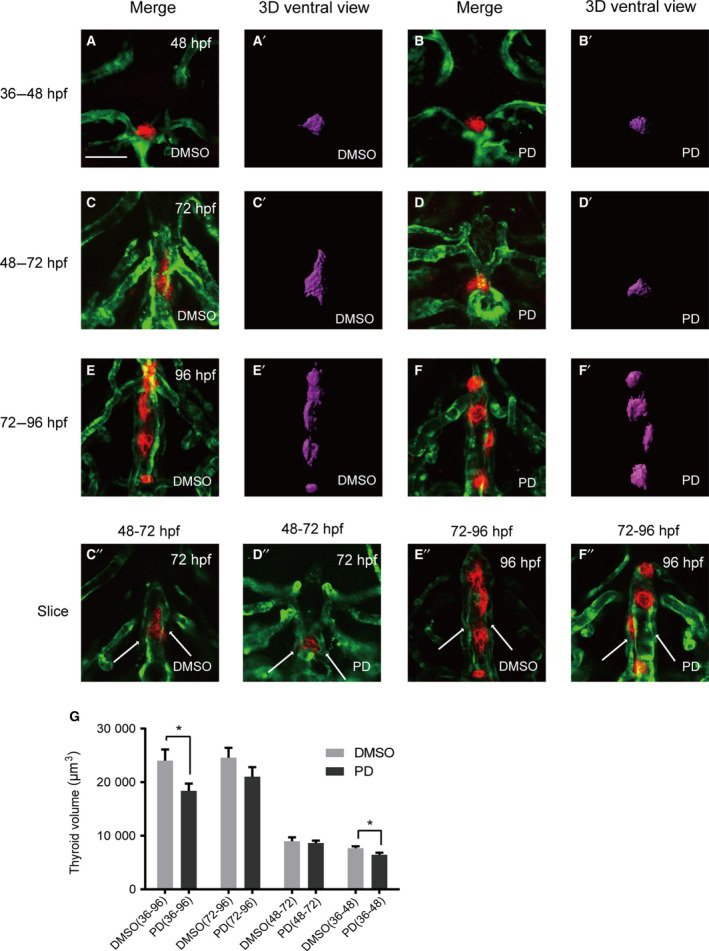Fig. 4
Treatment of embryos with the FGFR1‐selective inhibitor PD166866 from 36 to 96 hpf caused severe defects in thyroid morphology and volume and in HAs. All embryos shown are oriented anterior to the top in the ventral views. (A, C, E) Analysis of DMSO‐treated embryos showed normal vascular development with normal thyroid morphology. (B) Treatment with PD 166866 from 36 to 48 hpf caused a reduction in the signal intensity of

